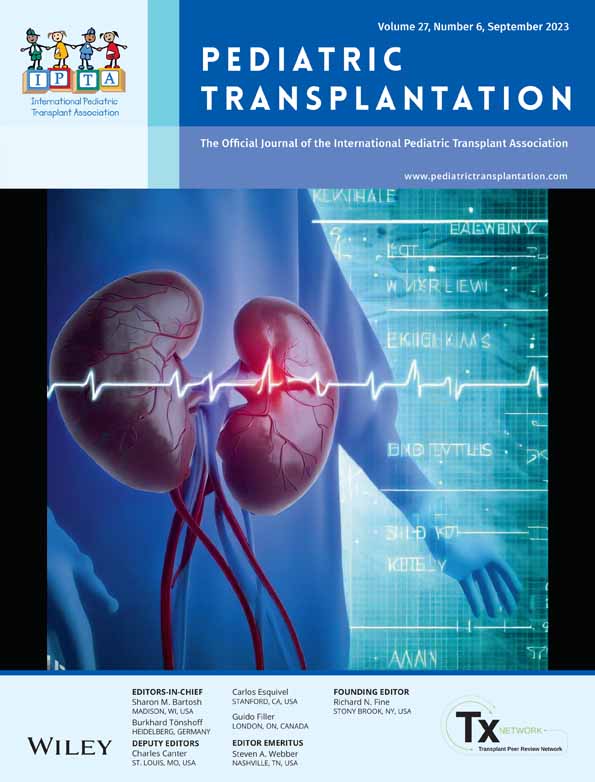Comparative analysis of whole vs. split liver transplantation in infants
[Correction added on 18 August 2023 after first online publication: New author Chaowapong Jarasvaraparn is added after the initial publication.]
Abstract
Background
Liver transplantation (LT) in infants can be challenging due to their small size and small vasculature. Although both whole LT (WLT) and split LT (SLT) have been described in infants, the head-to-head comparison of these techniques in this population is sparse.
Methods
We retrospectively analyzed the records of all patients with age ≤1 year at Indiana University between 2016 and 2022. All SLT were left lateral segment grafts split in situ.
Results
A total of 24 infants were transplanted, with 11 SLT and 13 WLT. The median follow-up time was 52.1 months. Donor and recipient characteristics were comparable except for donor age (19 years vs. 2 years; p < .01) and weight (64 kg vs. 14.2 kg; p < .01). Early allograft dysfunction, primary nonfunction, and hepatic artery thrombosis developed more frequently in the WLT group. There were no biliary complications. There were two early deaths (2 and 4 days) in the WLT group. One-year graft survival (100% vs. 77%; p = .10) and patient survival (100% vs. 85%; p = .18) were numerically higher in the SLT group.
Conclusions
SLT with LLS offers a safe and viable option for liver transplantation in infants and is associated with a trend toward superior outcomes. SLT should be considered as a strategy to reduce waitlist times for infants in the absence of small, deceased donors for WLT.
CONFLICT OF INTEREST STATEMENT
None.
Open Research
DATA AVAILABILITY STATEMENT
The data that support the findings of this study are available from the corresponding author upon reasonable request.




